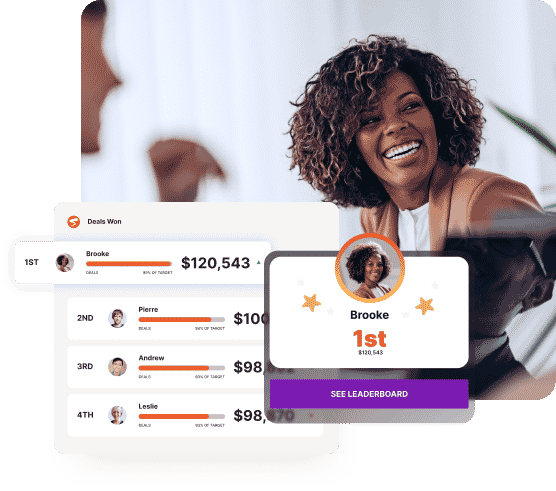5 KPI Metrics For Sales Teams

If you want to make sure you sell as much as possible and meet (or even exceed) that quota by the end of the year, you’re going to need a tool or two. And the most important tools in every sales manager’s toolbox are certainly Key Performance Indicators (KPI).
In this article, we’re going to show you top 5 KPIs for assessing your team’s performance.
Let’s take a look!
Why You Need KPIs for Your Sales Teams
Every sales team has a target KPIs for actual sales.
However, these KPIs won’t help you understand your team’s performance. They don’t provide enough context.
20 sales in a month mean very little if you don’t know which behaviors contributed to that success. But if you can cross-reference that KPI with KPIs such as the number of follow-ups, or specific actions that your sales reps took, you’ll know a lot more.
Understanding how to replicate and improve your team’s performance is the key to using sales team KPI.

Top 5 Metrics for Sales Teams
The following metrics will help you:
- Understand your sales team’s performance
- Understand the efficiency of your sales process
- Optimize
Truth be told, you need to continuously optimize your process and your practices. And with metrics for sales teams, you’ll know exactly what you have to do to sell even more.
- Time Spent Selling
Time spent selling is an excellent productivity metric!
It shows how much time your reps actually spend selling. As we all know, reps spend time on data entry, researching prospects, creating materials, and many other tasks. This can lead to their actual sales productive time being down to less than a few hours every day.
Again, it’s normal for reps to spend some time on activities other than communicating with prospects.
However, if your reps don’t spend a lot of time selling, you might need to:
- Automate certain processes
- Reduce your tool stack (e.g. choose a sales dashboard that motivates reps and tracks important KPIs)
- Delegate tasks
If you use Spinify, a gamified sales dashboard, you can easily set the Time Spent Selling KPI up by giving points for certain tasks.
For example, your reps could get 3 points for performing tasks unrelated to sales, and 5 for performing tasks directly related to sales.

2. Lead and Customer Response Rates
Lead and Customer Response Rates will show you how often your reps respond to leads and customers.
This KPI can help you understand productivity and workload.
For example, reps with low response rates might be taking on more than they can handle.
In that case, you can delegate some of their work to other reps, or automate certain processes.
Your problem might also be job disengagement. In that case, consider using Spinify, a gamified sales dashboard.

3. Research to Outreach Ratio
Research to Outreach Ratio is a perfect metric for establishing if your sales reps are performing enough lead qualification activities.
Simply ask your reps to log time spent researching prospects (especially important if they’re working with key account leads with high LTV), and time spent reaching out to and communicating with them.
If your reps spend more time researching their prospects than reaching out, then…
- They aren’t focusing on the right aspect
- Their leads may not be interested enough, signifying that their research methods aren’t accurate
If your reps spend more time reaching out to prospects than researching them, then…
- Pay attention to the lead response ratio. How many leads respond to their queries?
- If leads are not responding, it’s necessary to optimize lead qualification activities.
Again, this is something you can easily track with Spinify. You can even establish baselines for each rep to help them improve their ratio.
4. Follow-Up Rate
On average, it takes at least 5 follow-ups before you can close a sale.
This sales metric will help you understand if your reps give up too easily. They could be giving up after the second follow-up doesn’t result in a sale, or they might be focusing on lead generation.
Whichever the case, the follow-up rate will tell you everything you need to know.
5. Average Customer Value
Finally, it’s important to understand if your sales reps are actively increasing the value of customers.
This can alert you to important behaviors such as:
- Cross-selling
- Up-selling
- Retention
Average customer value can also show you how well each rep understands the prospect.
If a rep has conducted enough research, they’ll know how to tailor the offer to each prospect.

How Spinify Helps You Track Important Sales Team KPI
As a gamified sales dashboard, Spinify makes it fun for sales reps to win new customers.
Our tool gives you everything you need to:
- Understand and improve your performance
- Motivate your reps
- Increase your sales
Check out our social media pages for Spinify news and updates: LinkedIn & Twitter
Put those insights into practice.
Set your team up for success by improving their performance through gamification.
Back to blog







